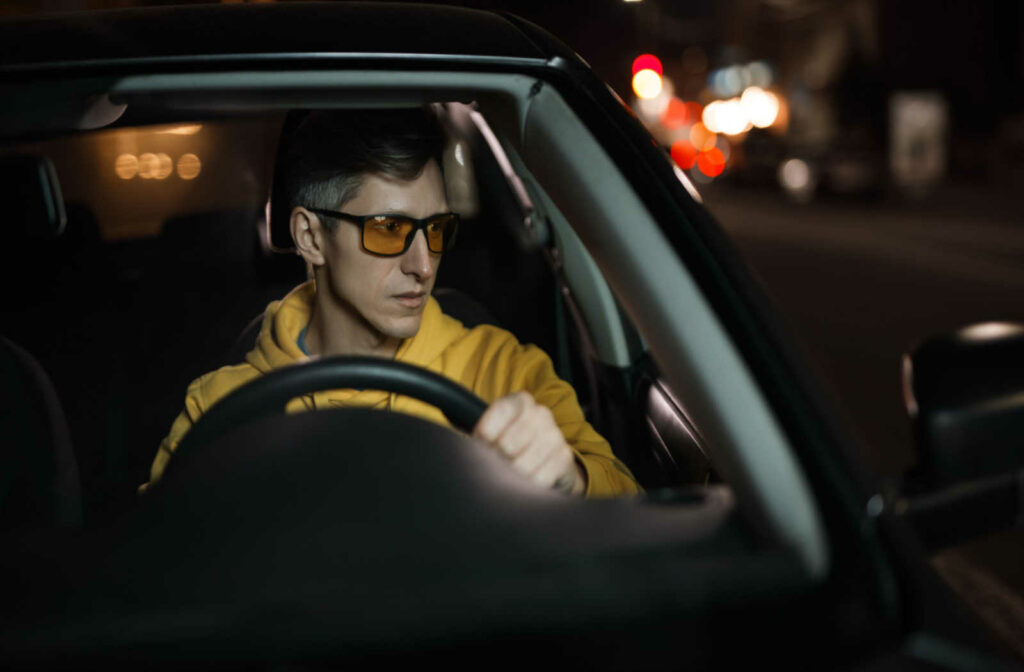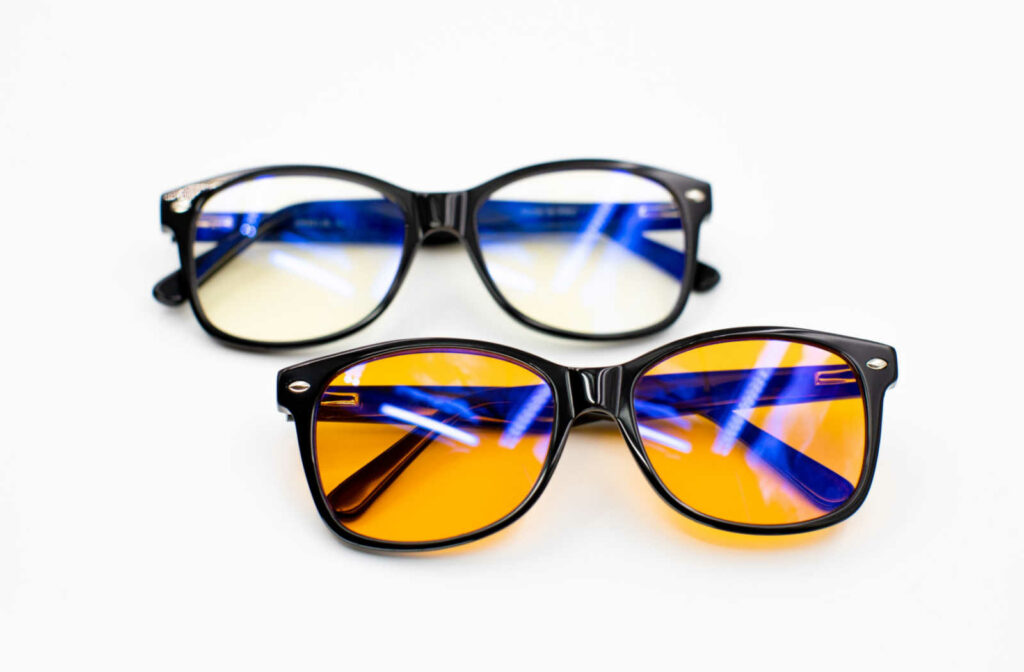Do Blue Light Glasses Help with Night Driving?
Finding the Right Driving Glasses
Prescription sunglasses are available for day driving, but darkened shades can be dangerous for nighttime driving. So is there an alternative eyeglasses option for driving in dimmer light?
There are many types of specialty eyewear and lens coatings, including eyewear designed for sports and driving. Lenses with unique tints can decrease glare or filter light, like blue light glasses. But are blue light glasses helpful for night driving?
What Are Blue Light Glasses?
Blue-light-blocking glasses filter blue light. Like all visible light, blue light travels in waves. Blue light has short, high-energy waves. Blue light is slightly less powerful than ultraviolet (UV) rays. The higher energy levels in shorter waves, like blue light and UV light, can have harmful effects when we’re exposed to too much.
We wear sunglasses and sunscreen to protect from the sun’s UV radiation, but what about blue light? While the sun is a significant source of UV and blue light, particles in our atmosphere deflect blue light. As a result, the scattered blue light makes the sky look blue.
While the most significant source of natural blue light is diluted, there are plenty of artificial sources. For example, many digital devices and LED lights emit blue light. The amount of blue light is weak, but we’re exposed to multiple sources for long hours.
Our reliance on digital screens and LED lights is still a relatively new part of human history, so the long-term effects are unknown. What research has discovered is that blue light influences our sleep patterns. Seeing blue light in the evening or late at night tells our bodies we should say awake.
Night Blindness & Driving Glasses
Visibility is a crucial part of safe driving for pedestrians, passengers, and drivers. While many environmental conditions can impact visibility, glare is a common concern. Even during dimmer times of day, glare can be a consistent problem.
People with night blindness have difficulties seeing at night, including night driving. Instead of complete blindness, the condition can cause blurry vision or difficulty seeing distant objects. Problems with glare or halos around lights are another common symptom.
Other causes of night vision problems include:
Night driving glasses uses yellow-tinted lenses to reduce glare, similar to shooting or hunting glasses. Tinted lenses are popular for sports. Yellow or orange-tinted lenses are particularly popular as the tint helps filter blue light and improves contrast in low-lighting conditions.
Bluelight glasses and yellow-tinted sports glasses work similarly. High-energy blue light is visible light most likely to cause glare. Therefore, preventing blue light from reaching the eye reduces glare. Unfortunately, night conditions already have low light. Limiting how much light is available—even blue light—can decrease visibility.

Do Night Driving Glasses Work?
A study by Harvard’s Schepens Eye Research Institute compared night driving glasses with clear lens glasses. The 22 participants drove in simulated nighttime conditions with headlight glare effects to mimic oncoming traffic. The study also measured the participants’ response time when seeing pedestrians approach.
The researchers found no significant difference in driving performance between the yellow-tinted driving glasses and clear lenses. However, in some scenarios, the driving glasses resulted in slightly worse performance.
The most notable findings were how drivers responded to pedestrians. The researchers reported no improvement in:
- How well participants detected pedestrians
- How headlight glare affected pedestrian detection
Rather than recommending driving glasses, the researchers cautioned eye care professionals from recommending yellow-tinted night driving glasses.
Blue-light-blocking lenses may reduce glare, but they are unlikely to benefit drivers hoping to see better at night.
Alternatives for Night Driving
Night drivers looking to reduce glare can still benefit from lens coatings. Anti-reflecting coating (or AR) can help drivers (or pedestrians) experiencing any lighting level by reducing glare and eyestrain.
While blue light filters limit light, AR coating allows 99.5% of light to enter the eye. With standard prescription lenses, only 92% of light reaches the eye. Anti-refecting coating enhances visual clarity by allowing more light by preventing glare. AR can also reduce eyestrain.
AR coating helps eyewear look clearer by eliminating the reflections from the front and back surfaces of the lenses. As a result, the lenses can seem almost invisible, even with high-index lenses that typically reflect more light.
Anti-reflecting coatings can also be applied to sunglasses. You can protect your eyes from UV light and brightness.
Ask Us About Eyewear Solutions
Talk to your eye doctor when your vision isn’t up to a task, whether you’re struggling with night driving or computer work. At eyeDOCS optometry clinics, we provide patients with the tools and understanding to achieve comfortable vision.
Stop squinting at glare and discover lens technology that satisfies your vision needs. eyeDOCS offers unique eyewear and eye care solutions. Contact our team today so we can support your eye health and vision.




